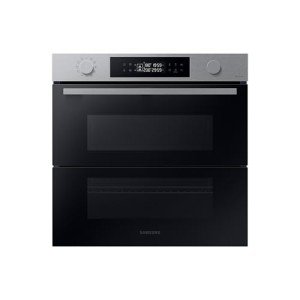The Rise of Built-In Ovens: A Seamless Approach to Modern Cooking
In modern kitchens, where design visual appeals mix effortlessly with functionality, one device stands out as a true video game changer: the built-in oven. As homeowners and chefs alike continue to look for innovative options that boost their cooking experience, built-in ovens have actually become significantly popular. This article checks out the advantages, factors to consider, and patterns surrounding built-in ovens, highlighting why they are an essential feature in modern cooking spaces.
What is a Built-In Oven?
A built-in oven is a kitchen appliance designed to be integrated into the cabinetry of a kitchen rather than standing alone. Unlike standard freestanding ovens, which can be moved and placed anywhere, built-in ovens can be found in various designs and sizes to fit particularly within designated spaces. Offered in single or double setups, these ovens use a structured appearance that complements modern cooking area styles.
Benefits of Built-In Ovens
1. Space-Saving Design
Among the most enticing advantages of built-in ovens is their space-saving style. By incorporating the oven into kitchen cabinetry, you can maximize valuable counter and floor area. This is particularly beneficial in smaller sized kitchen areas, where optimizing room is necessary. Built-in ovens can be set up at eye level, making them more available and reducing the requirement to bend down.
2. Aesthetic Appeal
Built-in ovens contribute to a sleek and cohesive cooking area design. Readily available in different finishes-- such as stainless-steel, black, white, and custom-made kitchen cabinetry-- they can mix effortlessly into the general decoration. This aesthetic appeal improves the kitchen's visual harmony and elevates the space, developing a modern and advanced atmosphere.
3. Boosted Functionality
Numerous built-in ovens come geared up with sophisticated cooking technologies, such as convection cooking, steam ovens, and smart functions. These enhancements allow for versatile cooking choices, making it easier to achieve professional-level results at home. Smart built-in ovens can even connect to Wi-Fi, making it possible for users to manage the oven remotely, receive alerts, and access a range of cooking programs and recipes.
4. Improved Ventilation
Since built-in ovens can be integrated with cooking area hoods and ventilation systems, they can assist keep much better air quality and reduce cooking smells. This is especially significant for those who like to cook with fragrant spices and active ingredients, as an effective ventilation system can keep the kitchen comfy and inviting.

5. Modification Options
Built-in ovens use a wide variety of personalization options to match specific cooking designs and needs. From professional-grade home appliances with multiple cooking modes to compact styles for smaller sized kitchens, property owners can pick the oven that fits their specific requirements. Many producers also provide personalized front panels, allowing you to match the oven's look to your kitchen cabinetry for a really unified look.
Considerations When Choosing a Built-In Oven
While built-in ovens have lots of benefits, there are necessary factors to consider to bear in mind before buying:
1. Price
Built-in ovens typically feature a greater cost than their freestanding counterparts due to their style and setup requirements. It's essential to consider both the expense of the oven and any additional expenditures connected to kitchen cabinetry adjustments or setup.
2. Setup Requirements
Installing a built-in oven often requires professional help, especially if you need to customize existing kitchen cabinetry. Guarantee that you consider any expenses associated with installation, consisting of labor and prospective cabinetry changes.
3. Size and Dimensions
Before purchasing a built-in oven, determine the designated area properly to ensure a correct fit. Built-in ovens been available in numerous sizes and configurations, so selecting one that aligns with your requirements and cooking area style is important.
4. Way of life and Usage
Consider your cooking habits and needs when choosing a built-in oven. If you often host big gatherings, a double oven may be more beneficial. On the other hand, if you have a compact kitchen, a single-wall oven might be enough.
Patterns in Built-In Ovens
The cooking area home appliance market is continually progressing, and built-in ovens are not exempt from emerging trends. intergrated oven and hob existing patterns include:
Smart Technology Integration: With the increase of smart home innovation, built-in ovens now typically feature connection choices. This permits users to keep track of cooking progress and change settings through mobile apps.
Energy Efficiency: As sustainability becomes a concern, lots of makers are purchasing energy-efficient built-in ovens that minimize energy intake while preserving efficiency.
Multi-functional Designs: Built-in ovens now provide features such as air frying, slow cooking, and steaming, providing flexibility that fulfills a large range of cooking techniques.
Conclusion
Built-in ovens certainly represent an ideal mix of style, function, and convenience in today's cooking areas. As more property owners select this modern service, the focus moves to creating a cooking area that is as aesthetically pleasing as it is useful. Whether you are developing a brand-new home or redesigning your kitchen area, considering a built-in oven might elevate your cooking experience and transform your kitchen area into a stylish and practical haven. With an array of options available and continuous developments in innovation, built-in ovens stay a standout choice for both amateur cooks and cooking enthusiasts alike.
